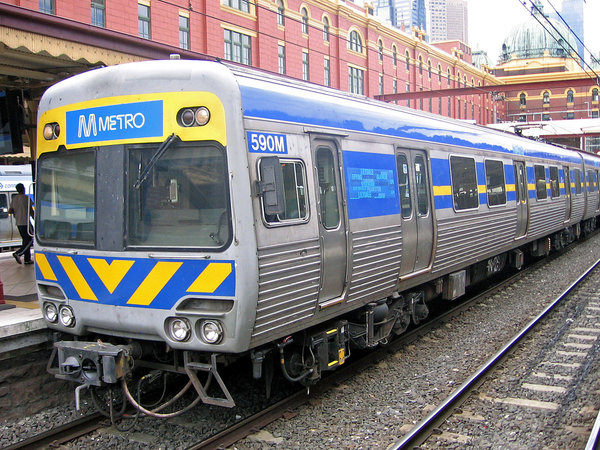Metro is in the process of removing up to eight seats per carriage from selected Melbourne trains. The project aims to increase overall capacity by ten percent by allowing for more standing room.
The Comeng train fleet, which is the largest in Melbourne, is expected to closely resemble the interior and seating numbers of the most modern fleet, the X’Trapolis, after the changes.
The Comeng trains currently seat 268 with enough standing room for an extra 495 passengers. By removing eight seats per carriage from the doorway areas of these trains, an additional 76 people will be able to fit.
According to a statement by Metro, the decision was based on research, trials and background work. The changes are being made to keep up with passenger demand.
“Melbourne is a constantly growing city, and our patronage on our trains has increased by about five percent in the last five years,” Metro’s statement said.
“It’s vital we keep up with this patronage growth, and we need to ensure we’re doing everything we can to keep our trains as comfortable as possible, especially during peak times.”
.@metrotrains has begun work on removing seats from train carriages, in a bid to boost capacity. #9News pic.twitter.com/hpQtotN4uB
— Nine News Melbourne (@9NewsMelb) March 16, 2015
According to the Public Transport Users Association, most Melburnians support switching car journeys to public transport but won’t do so until it is quicker, easier and more affordable.
During peak times–before 9 am and between 4 pm and 6 pm–trains run at least every 15 minutes on the majority of train lines. The chances of finding a seat during these times, however, have always been slim.
La Trobe University student, Freya Kvalic, told upstart that standing up for an extended period of time on a train can get uncomfortable.
“I use public transport at least five times a week,” she says.
“Standing is okay if you’re just traveling for a short period of time, but if you’re doing a long commute, for example from the city to home, after working and being on your feet all day, I would prefer to sit.
“When it comes to the removal of seats, I think Metro should restrict it to one carriage only. They shouldn’t remove any further seats. People pay an exorbitant amount of money already for public transport and it’s not unreasonable to want a seat.”
Metro said that customers have a tendency to stand close to the doorway while traveling, which is why they wanted to make more room in that area.
“It will make for a more comfortable ride on a crowded service as there is more space available as soon as you enter the carriage,” Metro said.
“We’re also expecting the changes to decrease the time it takes for customers to get on and off.”
Metro undertook a similar project in 2012 with the X’Trapolis fleet. A small number of seats were removed from each train carriage and this was said to have a positive impact on overcrowding and improve comfort.
“It’s a common design on trains overseas to have a lot of space in the doorways and through the middle of carriages, with seating along the edge of carriages,” Metro said.
“While ours isn’t the same layout, it is based on the same principal to have as much space as possible in areas near the doorway.”
Looking forward to that extra standing room. #Metrotrains pic.twitter.com/QXZz6QUqno — Michael Bell (@Xtrackka) March 17, 2015
Whilst some commuters are optimistic about the changes, others have different ideas about how Metro should handle increased patronage.
RMIT University student, Rhiannon Robertson, spoke to upstart about the overcrowding issues on Melbourne’s trains. She believes that Metro should create trains that are designated to passengers who wish to stand.
“I use trains to commute to university in the city three times a week,” she says.
“When I’m travelling home between 4 and 5 pm the train is always overcrowded with people.
“I prefer to use the seats on trains as my traveling time is usually up to 50 minutes. I’m not in support of the removal of seats. I think that for the rate I’m paying I should be guaranteed a seat.
“Perhaps if they offered a discounted rate for standing only trains, I would consider travelling on them.”
It is currently taking Metro between two and four days to remove the seats from each six carriage train. The entire project is anticipated to be finished by mid-January next year.
Joely Mitchell is a third-year journalism student at La Trobe University. You can follow her on Twitter: @joelymitchell.








